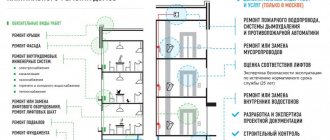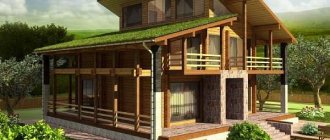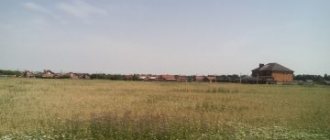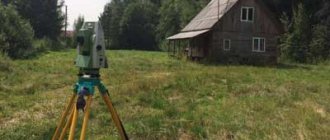Basic rules for carrying out repair work in a high-rise building
According to Art. 30, it is the owner of the apartment who bears the burden of maintaining the housing in proper condition. This means that he has the right to make his own decisions about carrying out repair work in the apartment.
However, acting even within the confines of his home, which is not a public place, the owner of the home can still become a violator of order or sanitary and epidemiological well-being of the population and even a person who causes damage.
To prevent this from happening, certain repair rules must be followed. The regulations for repairs in an apartment building should include:
- Compliance with the duration of repair work. The daily norm for continuous work is 6 hours. If technological features require longer work, you need to take a break. The repair period should not exceed 3 months, regardless of the time of year.
- Maximum permissible noise level. The maximum noise standards in an apartment building during renovation are 40–55 dB. The use of construction tools with higher noise levels is prohibited.
- Threat of damage. The work carried out should not pose a threat to the property of neighbors or the common property of residents of the apartment building. Compensation for damage caused is recovered through civil proceedings.
- Permission for redevelopment. Any work related to the reconstruction of residential premises, including changing its configuration, relocating utility networks and other transformations that require inclusion in the technical passport, must be agreed upon with local authorities.
Coordination of an extension in a built-in/attached room of an apartment building
- it is prohibited to impair access to the building's utility networks and disconnecting devices;
- it is impossible to eliminate or reduce the cross-section of natural ventilation channels;
- it is prohibited to increase the load on load-bearing structures above the standard values;
- You cannot make heated floors connected to central heating systems.
If the premises are an independent non-residential object, the above documents will be applied only in a limited form. For example, the Housing Code of the Russian Federation and SP 54.13330.2016 are not applicable in this case. Design solutions for a non-residential building must comply with the safety standards of Laws No. 384-FZ and No. 123-FZ, SP 118.13330.2012, Resolution No. 432-PP.
Legislative basis
There is no single legislative act that would regulate the issues and conditions of repair work in high-rise buildings in Russia. All standards for apartment renovations, with the exception of those established by federal legislation, can be regulated by regions independently.
For example, the inadmissibility of the harmful effects of construction noise on the population is established by the provisions. approves the maximum level of such noise at 55 dB. However, the conditions for their use are established separately in each region.
For example, in Moscow it operates.
Since the Moscow region is a separate region from the capital, it has different standards, in particular.
Other regions have their own regional legislation.
Repair time
One of the most important aspects of the sanitary well-being of the population is the hours of repair. This issue is the prerogative of regional legislation. Subjects of the federation have the right to independently decide:
- what hours can repairs or construction work be carried out;
- at what time period during the day should silence be observed;
- on what days work can be carried out, and when this will be considered a violation;
- how long can repairs in a high-rise residential building take, and in what cases additional permission will be required.
Let's look at examples typical for some regions.
Rules in force in Moscow and Moscow Region
For Muscovites, the time when repairs can be made in an apartment building is established by clause 1.1 of Art. 2 of Moscow Law No. 42. The legislator clearly defined that the time frame within which noisy repair work is permissible covers the period from 9 a.m. to 7 p.m.
A mandatory break has been introduced from 13 to 15 hours, which automatically reduces the maximum period of work to 8 hours.
This mode is valid from Monday to Saturday. On Sundays, other weekends and holidays, noisy work is prohibited.
Such requirements have only been in effect since 2016. Before the amendments were made to the law, only the time when it was prohibited to make repairs in an apartment building according to the law was regulated. Previously, this was the period from 23 pm to 7 am.
The Moscow Region has different rules for observing quiet times. It must be saved:
- from 21:00 to 8:00 on weekdays;
- from 22 to 10 am on weekends and holidays.
At the same time, regardless of the day of the week, there is a mandatory quiet hour from 13 to 15.
Rules in force in the regions
Although the regions of Russia have adopted different legal acts, they are not much different from the capital. They are based on general principles, in particular:
- prohibition or restrictions on noisy work on weekends/holidays;
- establishing a time frame within which repair or construction work is permissible during the day, or a period when noisy work is prohibited (in the evening, morning and night), introducing a daytime quiet regime;
- determination of the maximum daily duration and timing of repairs.
The generally accepted rules that apply in all regions also include the inadmissibility of the following actions:
- redevelopment without appropriate permission;
- placement of construction waste in premises that are common property of residents of a high-rise building;
- littering of emergency exits and so on.
Terms; Attached; And; Built-in; premises
In short. In the design specifications, the customer asked to design an ATTACHED administrative building to an unfinished warehouse building. In the first option, we designed a new administrative building a few meters (no more than 3 meters) from the existing warehouse frame and connected it to the warehouse by a passage. The customer agreed on the second option, where the administrative and administrative building is located in two bays of the existing frame of an unfinished warehouse. Of course, between two different categories (oh! I said it) there is a fire wall. After that, we made changes to the terms of reference and... accordingly, in the estimate, as for BUILT-IN premises. As a result, the Customer refused to approve the new terms of reference, citing the fact that the second option was an ATTACHED room. Based on the terms and definitions I found, to my horror, he is right.
Again a quote from SNiP 2.09.04-87 Insertion, installation - part of a building intended to accommodate administrative and utility premises, located within the industrial building along its entire height and width (insert), part of its height or width (integration) and allocated with fire protection obstacles.
When collecting fees for the maintenance of apartment building property in full, the courts often do not take into account that the owners of non-residential premises often independently perform the functions that a management company should perform. At the same time, we note that against the backdrop of a significant number of court cases in which judges chose to turn a blind eye to the real state of affairs and use ready-made tariffs (which, of course, is easier than assessing the extent to which the premises are connected with apartment buildings), court decisions appeared allowing to protect the interests of owners of non-residential premises. Thus, when considering the claim of the State Unitary Enterprise “Directorate of the Single Customer of the Sokolniki District” of Moscow for the recovery from the Lena Makashova Fashion House CJSC of debt for payment of expenses for the maintenance of the common property of the apartment building, the courts of the first and appellate instances established that the non-residential premises of the CJSC are built-in attached to a multi-apartment residential building, located on the 1st and 2nd floors, they represent an independent object, which was built according to a separate project from the residential building. The defendant’s premises have separate entrances and exits to the internal premises, do not have any constructive connection with the residential premises of the apartment building, are not interconnected either functionally or technologically, have their own load-bearing walls on which the floor slabs rest, their own roof, separate from home heating systems, water supply, sewerage, energy supply, ventilation, etc. From the moment non-residential premises were accepted for operation to the present, the defendant has entered into independent agreements with resource supply organizations. Considering the independence of communications located on the defendant’s premises from the communications systems of the residential part of the house, which is confirmed by construction and technical expertise, the courts came to the correct conclusion that Lena Makashova Fashion House CJSC, as the owner of the non-residential premises built-in and attached to the house, is autonomous from a residential building, cannot have the right of common shared ownership of staircases and garbage chutes, etc., located in the residential entrances of the apartment building, and there are no grounds for imposing on the defendant the responsibility for maintaining the common property related to the residential part of the apartment building. In fact, a residential building and built-in and attached premises are independent objects. It was established that the plaintiff did not manage (maintain) the built-in and attached premises, and the defendant independently bore the burden of maintaining his own property. Based on the above, the courts rightfully rejected the claim. A similar decision was made by the Arbitration Court of the Moscow District in case No. A40-201331/14.
Let us note that in the above cases considered by the Arbitration Court of the Moscow Region, the owners owned built-in and attached premises, which apparently allows us to say that these premises are partially located under the roof of an apartment building. However, the court considered the degree of isolation of these premises from the apartment complex to be sufficient to recognize them as actually independent real estate objects. Only property that all co-owners have the opportunity to use can be classified as common property. If the owners of non-residential premises are deprived of the opportunity to use elevators, staircases and similar “common property”, since they really do not have access to it, it is unreasonable to collect from them maintenance fees and ODN, since they cannot be considered co-owners, as they do not have the entire triad of rights of the owner, provided for in Art. 209 of the Civil Code of the Russian Federation.
Fines for violators of the regime
There are two types of fines for violators: for violation of federal or regional legislation. In both cases they are administrative in nature.
Prosecution for violating federal regulations is possible if the permissible noise level is exceeded. The violator is liable under Art. 6.3, which provides for a fine for an individual in the amount of 100-500 rubles.
If the silence regime is violated, the fine is regulated by regional legislation. For example, in Moscow for individuals its amount will be 1-2 thousand rubles. For officials and legal entities, the amounts are higher: 4-8 and 40-80 thousand rubles, respectively.
Where to go for help
Monitoring compliance with legislation in the field of repair work is the responsibility of several bodies:
- if we are talking about violating the silence regime, you must contact law enforcement agencies (the district police officer);
- in case of violation of sanitary and epidemiological standards of well-being in terms of increased noise, supervisory functions are performed by the local department of the sanitary and epidemiological station;
- in case of non-compliance with the requirements of the law regarding the redevelopment/reconstruction of premises or other violations of the requirements of housing law, you should contact the local office of the housing inspection;
- If, during repair work, damage is caused to the property of neighbors or the common property of residents of an apartment building, a claim must be filed in court to compensate for it.
How to correctly classify real estate? Types of non-residential premises
In Russian legislation, the term “detached building” is not clearly defined by regulations. In legal practice, this term refers to an architectural object that is not united with another building by a common foundation and communications.
- The main premises are provided for the implementation of the main goals and objectives of the building, in which functional processes take place.
- An auxiliary premises, according to its functional purpose, serves one, several premises or the entire building and cannot be independently used by persons who are not the owners of the building or premises in this building. This category refers to objects that are inextricably linked with the life support systems of the building.









